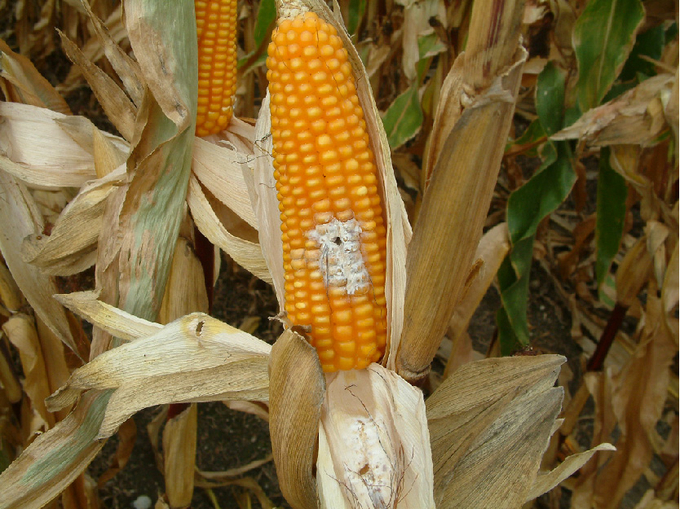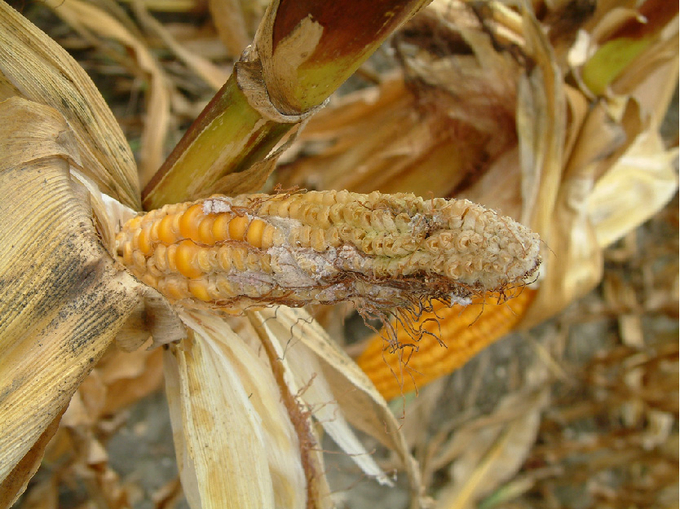Ear rot of maize
Fusarium spp.
Profile
Corn ear rot is caused by a variety of fungi belonging to the genus Fusarium . These form a whitish fungal network on corn and various cereal and grass species. The infestation causes considerable yield and quality losses. In addition, the fungi produce toxins that can lead to symptoms of poisoning in humans and animals. Therefore, the harvested crop can no longer be used as feed or food if it contains a high level of mycotoxins.
Biology
Several harmful organisms are possible causes of cob rot:
Fusarium spp. (Fusarium culmorum, Fusarium graminearum, Fusarium moniliforme, Fusarium verticillioides, Fusarium proliferatum, Fusarium subglutinans, Fusarium equiseti).
Penicillium spp.
Nigrospora spp.
The majority of these fungi are also involved in the damage complex of root and stem rots of maize.
Damage symptoms
Individual kernels of the cobs or even whole corn cobs may be covered with an often pink to reddish, sometimes white fungal tangle (mycelium). Both the cob base and the cob rachis may be fungal. If an infestation is weak, only individual grains of a cob are affected. In case of heavy infestation, the read leaves (enclosing and protecting the cob) may also be reddish discolored and stuck together by the dense fungal network. Sometimes a sweetish odor can be noticed on the cobs due to the infestation.


Propagation and transmission
The survival of the fungi takes place on the seed or on infested plant remains on and in the soil. In the following season, spores are then transported by the wind from exposed mycelial cushions. After fertilization of the stigmas, these spores penetrate through them to the cob tip.
The infection process is facilitated by rainy and cool late summer and fall weeks with high humidity. When the aphids open due to external influences, rainwater washes the spores up to the base of the cob. There, they find ideal conditions for germination and development under the flies due to high humidity. Influences for the opening of the Lieschen are:
- Infestation of the cobs by corn borer
- Infestation by stem and root rots
- Hoeing up of the fly by birds
- Early or late frosts
Prevention and control
- Prevention: Selection of a less susceptible variety including consideration of the suitability of the variety for the particular growing area.
- The complete maturity of the plants must be given before the first frost.
- Harvesting must also begin immediately after maturity and the corn kernels must be dried to prevent the spread of disease while still in storage.
- The risk of infection can be reduced by incorporating the crop residues by means of turning tillage and widely spaced corn crop rotation.
Specialized information
In cooperation with us, the Chambers of Agriculture carry out an annual Austria-wide mycotoxin monitoring on several dates. Farmers can obtain an up-to-date overview of the status of mycotoxin contamination of maize in their region during the growing season and take timely measures (earlier harvest) in the event that the guideline and limit values are threatened to be exceeded.
Last updated: 02.10.2025
automatically translated